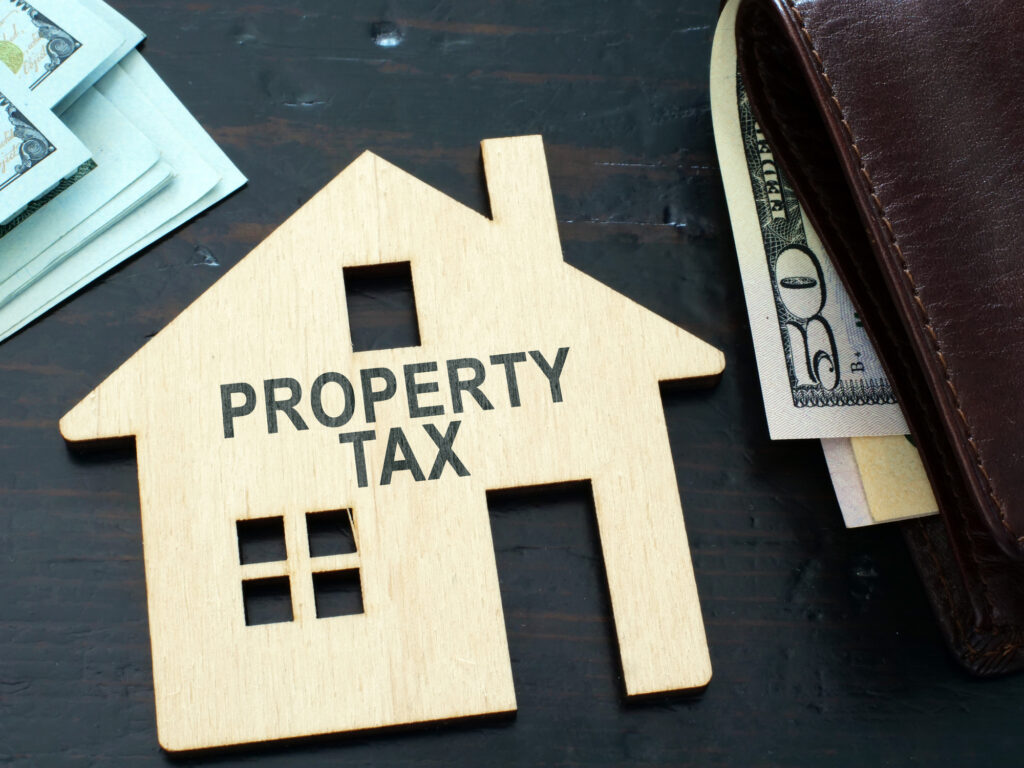Photo illustration by Getty Images.
Property taxes aren’t red/blue or political; the State of Montana writes the rules on property taxes, counties follow the rules. And everyone—no matter what your political stripe—pays. It’s no secret that Missoula County and Beaverhead County are opposite in terms of politics, but we’re aligned when it comes to current property tax issues.
The governor, Greg Gianforte, sent another letter to all Montana homeowners about property taxes, which has likely hit your mailboxes. The letter asserts that 1.) Property taxes are high because some local governments’ spending is out of control; and 2.) The State’s haul from property taxes is “small.” Both statements are inaccurate and require factual clarification.
First, county spending and county taxation are not the same thing. Yes, counties use property taxes to provide essential services; however, they aren’t the sole source of revenue.
For example, counties often receive grants from the federal government to complete large-scale road projects they wouldn’t be able to fund otherwise. The counties spend the money from these grants, which will be included in their budgets; however, these are not local property tax dollars.
In fact, two-thirds of Missoula County spending comes from non-property tax dollars. Similarly, Beaverhead County’s fiscal year 2023 audit states, “County wide tax revenue is 34% of the total financial resources, non-tax revenue is 41.5% and 24.5% is cash as of last FY ending balance.” Again, total county spending and local property taxes are not the same thing. Saying otherwise is either ignorant or disingenuous.
Second, state law caps county property taxation. Increases are capped to one-half the 3-year average of inflation annually; this is called the “mill cap.” Therefore, counties cannot legally do what the governor is claiming. Your taxes went up way more than one-half the inflationary average due to a combination of three actions/inactions:
The state chose to keep a high residential property tax rate—set in Montana law—during the last Legislative Session (2023). Prior to the session, the Department of Revenue informed the Legislature a tax rate of 0.94% would keep residential property taxes flat. The State chose to stick with their rate of 1.35%.
There were record increases in home values; and
Select industries received a tax reduction on the backs of residential property taxpayers – telecoms, railroads, airlines, pipelines, and NorthWestern Energy. (You paid for your tax increase and their tax break.)
When you combine the afore mentioned three factors, your taxes skyrocketed, even though the increase in county tax collections were below the rate of inflation.
What Gianforte calls the state’s “small portion of property taxes” amounts to a new $81 million for state government. For a Beaverhead County resident outside city limits, the State’s “small portion” of property taxes amounts to more than 20% of the total tax bill. More drastically, in Gallatin County, the state’s “small portion” is more than the entirety of the county portion.
A “mill” is a unit of measure for taxation, like how a mile is a unit for distance. However, the dollar value of a mill changes as real estate values change. Because real estate soared last year, mill values soared as well.
Subsequently, counties used fewer mills than they did the previous year. For example, Missoula County lowered the number of mills used, and every one of Beaverhead County’s departments with voted mill authority voluntarily took a mill reduction to help offset the increase on tax bills. Counties asked the governor and state to do the same.
The State, however, continued to ask for their full 95 mills, despite the exorbitant mill value. That sky-high mill value brought the state a new $81 million, because they wouldn’t lower the number of mills they used. Counties did.
Yes, the state has the legal authority to access the full 95 mills, but they also have the responsibility not to, especially knowing tax bills would soon skyrocket.
The governor is right on one thing though: It’s time to reform the property tax system.
Beaverhead County Commissioner Mike McGinley and Missoula County Commissioner Josh Slotnick co-authored this guest opinion.

